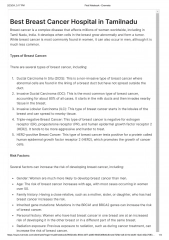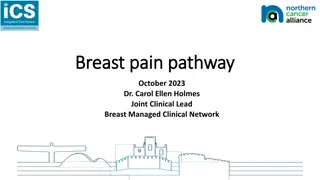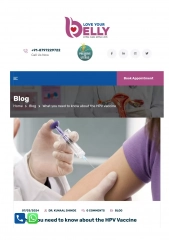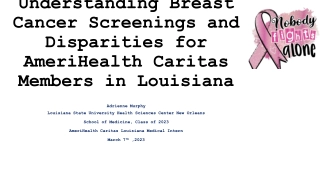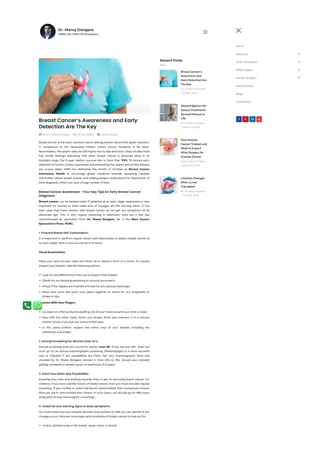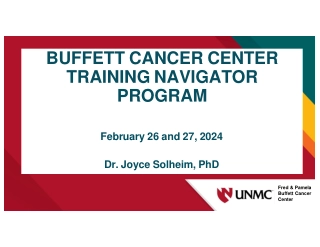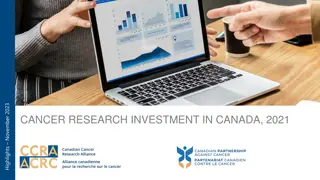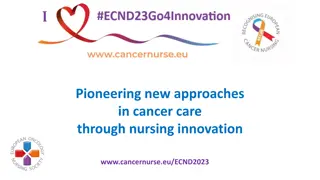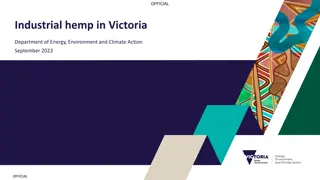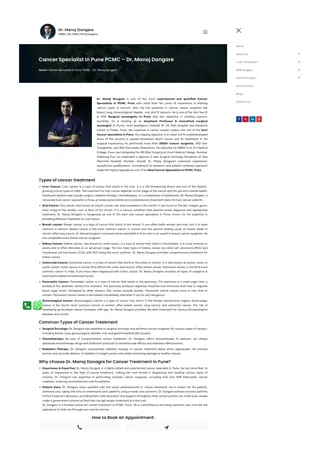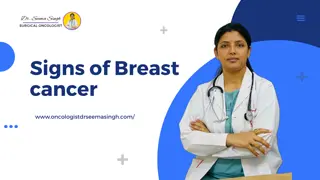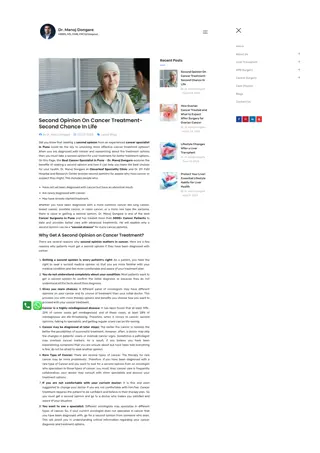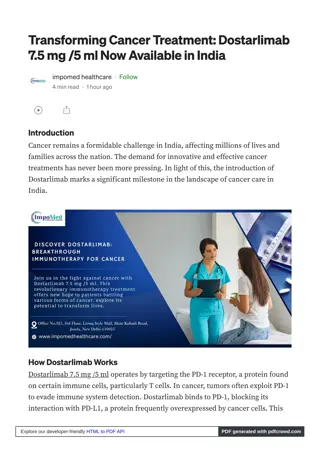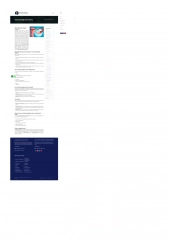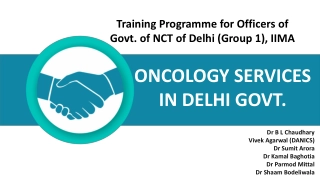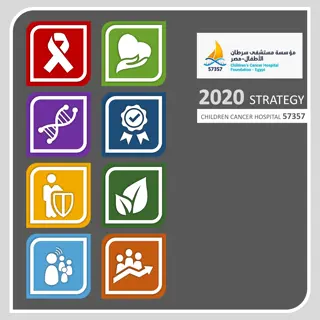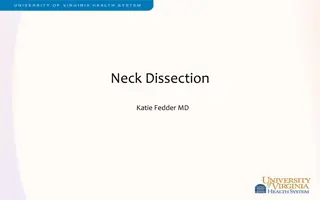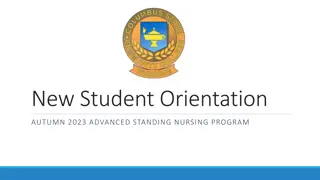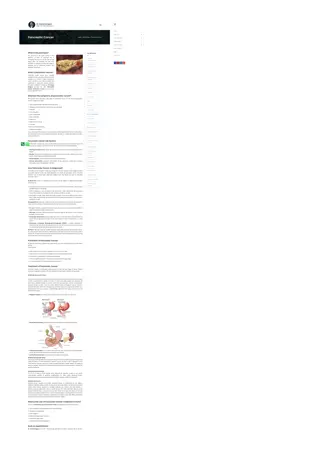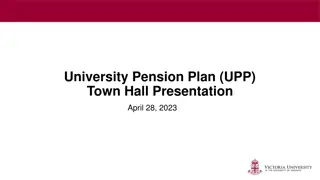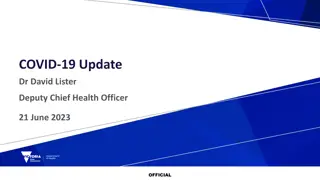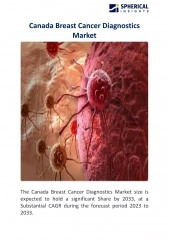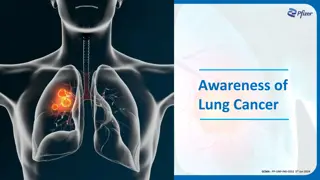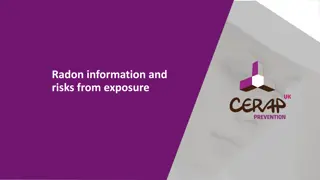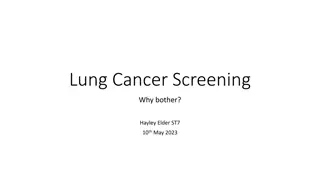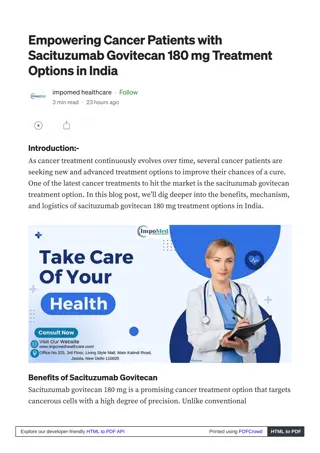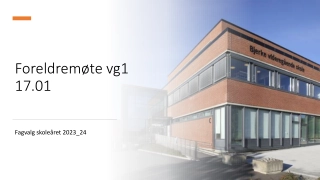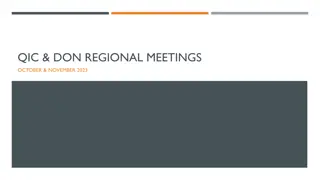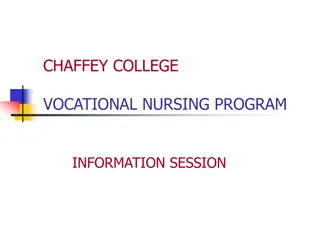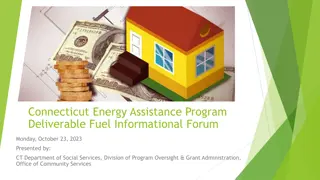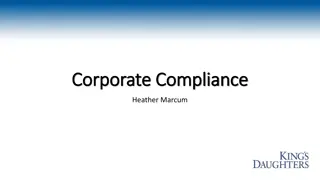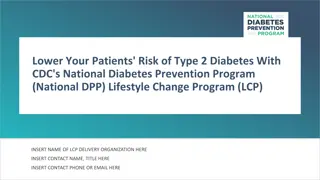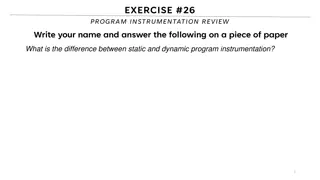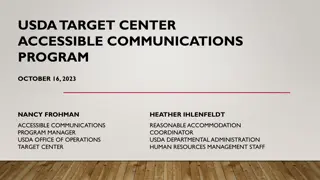Understanding Breast Cancer: The BreastScreen Victoria Program
Explore the BreastScreen Victoria Program, learn about breast cancer risk factors, early detection, and survival rates in Australia. Discover how to reduce your risk, be breast aware, and recognize normal breast changes. Find out how the program is delivered and the difference between breast screening and diagnostic screening.
Understanding Breast Cancer: The BreastScreen Victoria Program
PowerPoint presentation about 'Understanding Breast Cancer: The BreastScreen Victoria Program'. This presentation describes the topic on Explore the BreastScreen Victoria Program, learn about breast cancer risk factors, early detection, and survival rates in Australia. Discover how to reduce your risk, be breast aware, and recognize normal breast changes. Find out how the program is delivered and the difference between breast screening and diagnostic screening.. Download this presentation absolutely free.
Presentation Transcript
The BreastScreen Victoria Program
Acknowledgement of Country I would like to acknowledge the traditional custodians of the land on which we meet today. I would also like to pay my respect to Elders past and present. Artist - Aunty Lynette Briggs (Wiradjuri, Yorta Yorta) 2
Todays presentation Breast cancer in Victoria Risk factors Being breast aware BreastScreen Victoria program and early detection
Breast cancer The growth of cells in the breast that are not normal, and can grow and spread to other parts of the body
1in7women will develop breast cancer in their lifetime 5
Survival rate 91% Australia now has one of the best breast cancer survival rates in the world 91% 91% after 5 years.
Risk factors Being a woman Getting older Having a family history
Normal breast changes Changes to the breasts can occur with: Puberty Menstrual cycle Pregnancy and breastfeeding Weight loss and gain Menopause 10
Changes to look for 11
The program
How we deliver the program
Breast screening vs diagnostic screening
Do I need a breast screen? Early detection saves lives. Early detection saves lives. Aged 50 Aged 50- -74? You should be screened every two years. In your 40s or over 75? In your 40s or over 75? Talk to your doctor to find out if breast screening is right for you. Under 40? Under 40? Breast screens are not effective for women under 40 years. 74?
Early detection is key Early detection of breast cancer offers you a better chance of successful treatment and recovery A breast screen can detect most cancers before they are felt or noticed Finding breast cancer early is important
Information for my appointment You can bring someone with you Wear a top and bottoms (pants/skirt) as you will need to remove your top and bra You can ask for a gown Four images are taken of the breasts The machine will press firmly but should not hurt You can ask to stop at any time Results are sent to you in 2-4 weeks A breast screen is a low-dose x-ray of the breast. It is also called a mammogram.
2 years later We invite most people to have a breast screen every 2 years See your doctor if you notice any changes between breast screens
What happens at assessment? Approximately 5.3% of women will be called back for further tests. This may include: extra mammograms ultrasound clinical examination needle biopsy Most women who are called back for more tests do not do not have breast cancer.
Your local BreastScreen clinic
What is breast density? Breasts are made up of a combination of tissue; fatty, glandular (the milk ducts and lobules) and connective tissue (which helps hold everything in place). Women with high breast density have more glandular tissue and less fatty tissue. Breast density usually reduces with age as most women's breasts change through menopause becoming more fatty and less dense. Extra screening tests are available and should be considered in discussion with a doctor: ultrasound, contrast enhanced mammography, magnetic resonance imaging (MRI) and 3D breast screen (digital mammography tomosynthesis). Note: Medicare does not cover these additional tests.
For more information or to make an appointment, book online at: www.breastscreen.org.au or call 13 20 50 To talk with an interpreter, call 13 14 50, and ask for BreastScreen Victoria
Questions? 23


